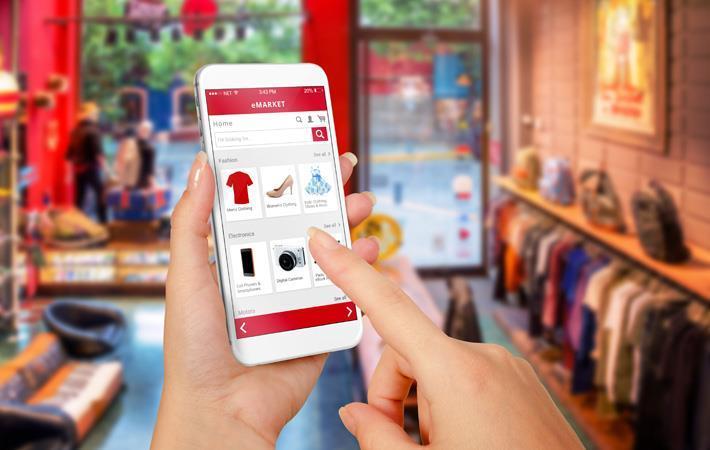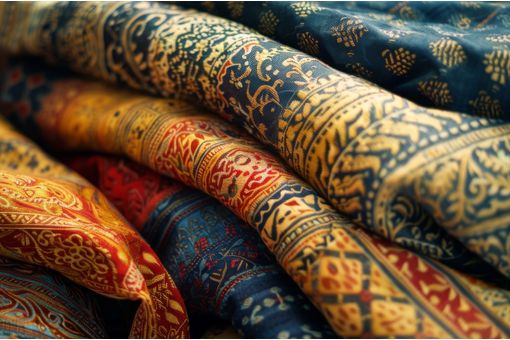Interviews
Your go-to source for news, anytime, anywhere! Insightful industry information from the textile, apparel & fashion world with our news app
Download Now
Your go-to source for news, anytime, anywhere! Insightful industry information from the textile, apparel & fashion world with our news app
Download Now
Your go-to source for news, anytime, anywhere! Insightful industry information from the textile, apparel & fashion world with our news app
Download Now
Your go-to source for news, anytime, anywhere! Insightful industry information from the textile, apparel & fashion world with our news app
Download Now
Cornell says augmented reality increases buying chances
06 Jun '20
4 min read

Pic: Shutterstock
A study carried out at Cornell University has revealed that an augmented reality (AR) tool which lets shoppers see an image of themselves in the garment increases the chances of the garment being bought. Though not as effective as physically trying it on, AR influenced shoppers’ attitudes toward the garment positively and improved purchase intention.
The study has been carried out by a team including Fatma Baytar, assistant professor of fibre science and apparel design and director of the Body Scan Research Group. The team had collaborators from Iowa State University and Virginia Polytechnic Institute.
Online shoppers tend to order multiple sizes and colours, with the intent of sending back the items that don’t fit or aren’t the right colour, a practice known as “bracket shopping.” The AR tool allowing shoppers to see an image of themselves in the garment, however, made them more likely to want to buy it.
While not as effective as physically trying it on, the researchers found that AR boosted participants’ attitudes toward the garment, potentially improving the experience and efficiency of online shopping.
“Bracket purchases increase shelving and shipping costs,” Baytar said. “We’re hoping these technologies can reduce those costs, while also decreasing the carbon footprint associated with return shipping.”
The study, “Evaluating Garments in Augmented Reality When Shopping Online,” has been published in the Journal of Fashion Marketing and Management.
Current virtual try-on technologies offer two methods of improving online shopping. One involves creating an avatar by inputting key body measurements and then trying clothes on the avatar. The other method is AR – using a computer, phone or tablet screen as a mirror reflecting a shopper and background while overlaying the chosen garments on the shopper’ image.
The team focused on the latter technology, asking participants to virtually try on a dress, select a size to “order” and then physically try on the dress in that size. Participants evaluated the AR dress for size, fit and performance, then did the same following the physical try-on.
Results for the AR technology were mixed. According to Baytar, study participants were able to find the right size with AR try-on, but had trouble evaluating the fit – particularly at the bust, waist and hips. One explanation, Baytar said, was that although the image of the dress was taken when the dress was on a dress form, rather than hanging flat, it was still a 2D image. Adding to the difficulty evaluating fit was that the dress form’s hourglass shape did not match the body shape of all participants.
Evaluating product performance – style, fabric, colour, coordination with other items, touch and feel, weight, fit, comfort and appearance on the body – was significantly different when experienced in AR versus real life. Colour was the only performance factor that showed no difference across the two try-on experiences.
But even with the limitations, participants responded well to the virtual dress.
“Attitudes to the AR garment and the real garment were really high, which means the participants liked it and their purchase intentions were relatively high, though they were higher for the real garment,” Baytar said. “This is still a promising technology, because AR can provide good visual information that improves consumer attitudes and purchase intentions. We think a company could use this technology to create a buzz when introducing a new style.”
Baytar and her colleagues also wanted to know how telepresence – consumers’ sense of being present in a virtual environment – would impact their attitudes toward the AR garment and purchase intentions. As expected, the study showed that higher telepresence corresponded to more positive attitudes toward the AR garment.
The study was completed in 2016 but has new significance, Baytar said, with brick and mortar stores being closed during the COVID-19 crisis.
“The technology we used was limited, and even four years later the technology still needs to be improved,” Baytar said. “We can expect that as these technologies evolve, people will trust online shopping more, they will trust that they will get the right size that fits them and will look like it did on the screen.”
The study has been carried out by a team including Fatma Baytar, assistant professor of fibre science and apparel design and director of the Body Scan Research Group. The team had collaborators from Iowa State University and Virginia Polytechnic Institute.
Online shoppers tend to order multiple sizes and colours, with the intent of sending back the items that don’t fit or aren’t the right colour, a practice known as “bracket shopping.” The AR tool allowing shoppers to see an image of themselves in the garment, however, made them more likely to want to buy it.
While not as effective as physically trying it on, the researchers found that AR boosted participants’ attitudes toward the garment, potentially improving the experience and efficiency of online shopping.
“Bracket purchases increase shelving and shipping costs,” Baytar said. “We’re hoping these technologies can reduce those costs, while also decreasing the carbon footprint associated with return shipping.”
The study, “Evaluating Garments in Augmented Reality When Shopping Online,” has been published in the Journal of Fashion Marketing and Management.
Current virtual try-on technologies offer two methods of improving online shopping. One involves creating an avatar by inputting key body measurements and then trying clothes on the avatar. The other method is AR – using a computer, phone or tablet screen as a mirror reflecting a shopper and background while overlaying the chosen garments on the shopper’ image.
The team focused on the latter technology, asking participants to virtually try on a dress, select a size to “order” and then physically try on the dress in that size. Participants evaluated the AR dress for size, fit and performance, then did the same following the physical try-on.
Results for the AR technology were mixed. According to Baytar, study participants were able to find the right size with AR try-on, but had trouble evaluating the fit – particularly at the bust, waist and hips. One explanation, Baytar said, was that although the image of the dress was taken when the dress was on a dress form, rather than hanging flat, it was still a 2D image. Adding to the difficulty evaluating fit was that the dress form’s hourglass shape did not match the body shape of all participants.
Evaluating product performance – style, fabric, colour, coordination with other items, touch and feel, weight, fit, comfort and appearance on the body – was significantly different when experienced in AR versus real life. Colour was the only performance factor that showed no difference across the two try-on experiences.
But even with the limitations, participants responded well to the virtual dress.
“Attitudes to the AR garment and the real garment were really high, which means the participants liked it and their purchase intentions were relatively high, though they were higher for the real garment,” Baytar said. “This is still a promising technology, because AR can provide good visual information that improves consumer attitudes and purchase intentions. We think a company could use this technology to create a buzz when introducing a new style.”
Baytar and her colleagues also wanted to know how telepresence – consumers’ sense of being present in a virtual environment – would impact their attitudes toward the AR garment and purchase intentions. As expected, the study showed that higher telepresence corresponded to more positive attitudes toward the AR garment.
The study was completed in 2016 but has new significance, Baytar said, with brick and mortar stores being closed during the COVID-19 crisis.
“The technology we used was limited, and even four years later the technology still needs to be improved,” Baytar said. “We can expect that as these technologies evolve, people will trust online shopping more, they will trust that they will get the right size that fits them and will look like it did on the screen.”
A recent survey found that online shoppers return 70 per cent of the clothing they order, more than any other category of purchase. This has an indirect but real impact on the environment.
Fibre2Fashion News Desk (SV)
Popular News
Leave your Comments
Editor’s Pick



20240507093516.png)




























-Ltd..jpg?tr=w-120,h-60,c-at_max,cm-pad_resize,bg-ffffff)





.jpg?tr=w-120,h-60,c-at_max,cm-pad_resize,bg-ffffff)
.jpg?tr=w-120,h-60,c-at_max,cm-pad_resize,bg-ffffff)






